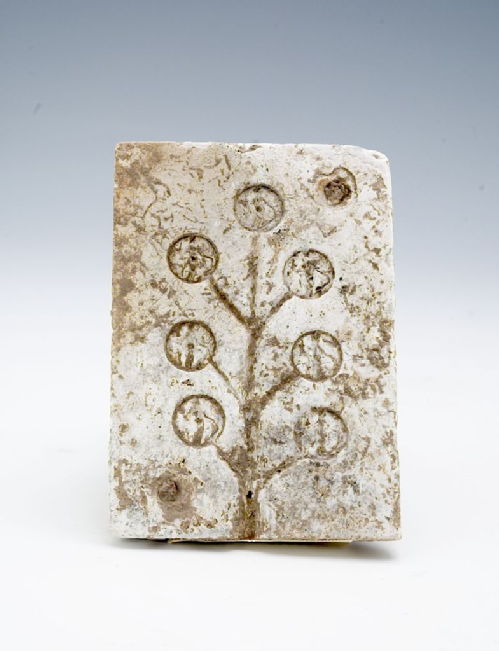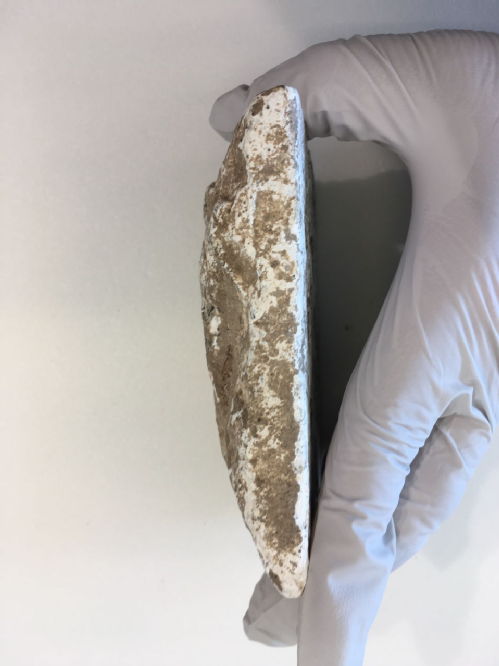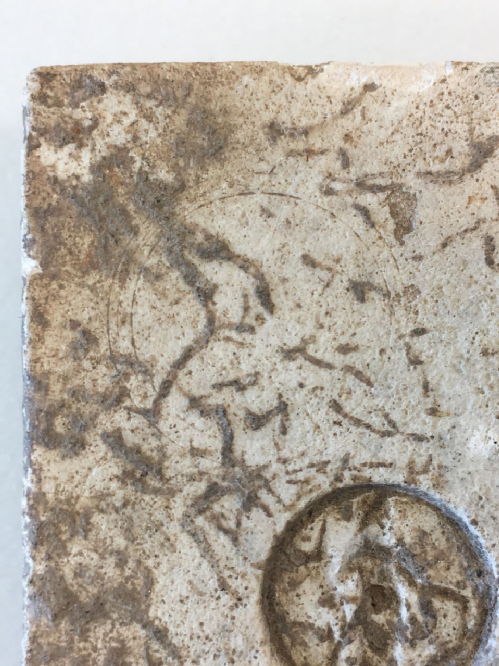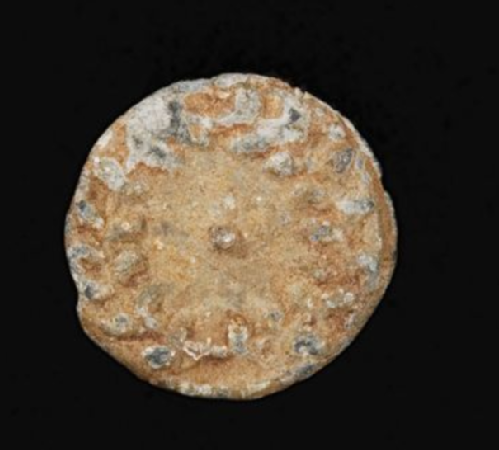All 1 entries tagged Mcdaniel
No other Warwick Blogs use the tag Mcdaniel on entries | View entries tagged Mcdaniel at Technorati | There are no images tagged Mcdaniel on this blog
June 01, 2018
A Roman Token Mould in Harvard
 |
| Roman Token Mould from Harvard Art Museums, 2008.118 |
Amongst the McDaniel bequest to Harvard Art Museums in Boston is one half of a mould made of palombino marble. Shown here, this piece is one of the numerous moulds of this type used to cast Roman lead tokens. This particular mould half is 10.8x7.6x2.9cm and weighs 389.2g. It would have been used in conjunction with another half to cast seven circular lead tokens of c. 14mm, all carrying an image of the goddess Fortuna holding a cornucopia and rudder (and presumably another image on the other side, engraved on the other half of the mould). It has previously been published in Hirschland and Hammond 1968.
This type of token mould is characteristic of Rome and Ostia, and was donated to Harvard along with McDaniel's collection of Roman lead tokens and other antiquities. We know from McDaniel himself that he purchased his lead tokens (and thus probably also this mould) from the city of Rome. In his memoir, Riding a Hobby in the Classical Lands (p. 71), McDaniel writes:
“For the integrity of one dealer in Rome I can vouch unreservedly and so, as a contrast to some of the rest of my group, I name him here at the end of the chapter, honoris causa, Signore Scalco. His sunny face and smile alone used to lighten the tiny, gloomy shop not far from St. Peter’s in which he exposed for sale his modest stock of classical antiquities. A charming, well-informed Italian was he, who often had unusual things for sale. Thus, it was from him I bought a considerable number of papal medals…. From him, too, came my piombi, those coin-shapes of lead which have so much about them to pique the curiosity and to puzzle the best of scholars as they work on the problem of their various uses. While I almost never saw any customers in the shops of the other small dealers in Rome, Scalco was one who received calls from archaeologists, who liked to chat with him, and also from the proprietors of the more pretentious establishments, who would buy from him in order to sell again. There, too, one might chance at any time upon one of the rough dwellers of the Trastevere who had fished something out of the Tiber which he expected to have identified as modern, or, if good luck were his, to sell as an antiquity. He was just as sure as the most promising customer to receive all the attentions of courtesy and fair treatment; that was Scalco."
 |
|
Cast lead tokens
from Ostia.
|
The mould carries the channels through which molten lead was poured into the token cavaties; the resulting tokens were then broken off to be used (see the picture left for an example of what the resulting cast would have looked like before the tokens were broken off). The mould still contains the iron nails used to fasten both halves of the mould together (in the top right and lower left corners) - this would ensure that both halves of the mould were correctly aligned. The top and bottom sides of the mould carry faint grooves (see image below); it has been suggested that these grooves were created for or by wire that was wrapped around the moulds during the casting process (Pardini et al 2016). The back of the mould is unworked, as many moulds of this type are.
The top right corner of the Harvard mould has an unusual feature: two concentric circles are etched into the material (see image below). The inner circle is 14mm, the precise diameter of the tokens produced by this mould. These two circles may have been an error made by the person producing the mould, or they may in fact provide a clue as to how these moulds were made: perhaps two concentric circles were sketched before a design was carved into the inner circle- here, perhaps, it was decided that this additional token design was not needed. When one looks closely at each of the circular designs, one sees a deep circular depression at the centre, on Fortuna's body. Jack Kroll, in his unpublished catalogue of these pieces, suggested that this depression was caused by the bit of an instrument used for cutting the circular depressions before the designs were engraved (much like the point of a compass). Many Roman lead tokens carry circular protuberances at their centre; the Harvard mould allows us to understand these protuberances were the result of the mould manufacturing process rather than an intentional part of the design.
Images below from left to right: the side of the mould with faint grooves; a close up of the top left corner of the mould showing two concentric circles and a central depression on the body of Fortuna; a Roman lead token from the Harvard Art Museums collection (2008.116.41) with a wreath and a central dot, now understood to be a result of the mould making process.
 |
 |
 |
This coin of the month was written by Clare Rowan as part of the Token Communities in the Ancient Mediterranean Project.
Select Bibliography:
Hirschland, N. L. and M. Hammond (1968). Stamped Potters' marks and other stamped pottery in the McDaniel Collection. Harvard Studies in Classical Philology 72: 369-382.
Kroll, J. H. (unpublished manuscript). Roman Lead Tokens in Harvard Art Museums.
McDaniel, W. B. (1971). Riding a Hobby in the Classical lands. Cambridge, Mass., Harvard University Printing Office.
Pardini, G., M. Piacentini, A. C. Felici, M. L. Santarelli and S. Santucci (2016). Matrici per tessere plumbee dalle pendici nord-orientali del Palatino. Nota preliminare. In: Le regole del gioco tracce archeologi racconti. Studi in onore di Clementina Panella. ed. A. F. Ferrandes and G. Pardini, Edizioni Quasar: 649-667.
 Clare Rowan
Clare Rowan

 Please wait - comments are loading
Please wait - comments are loading

 Loading…
Loading…

